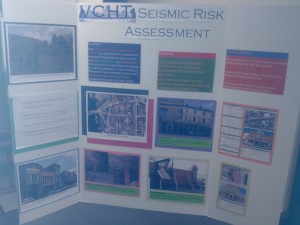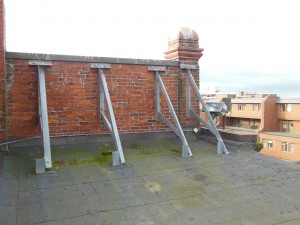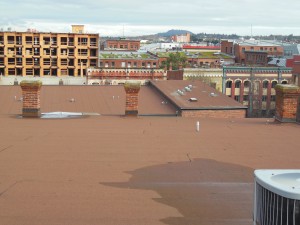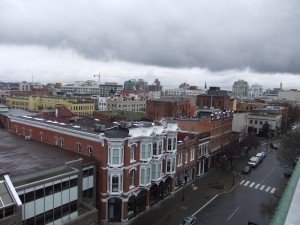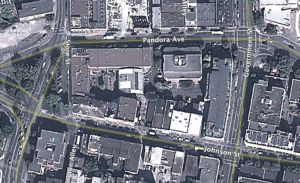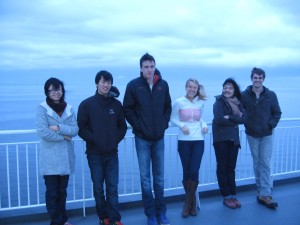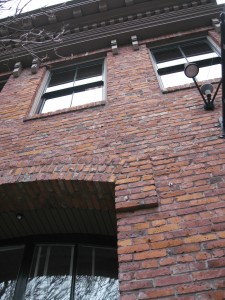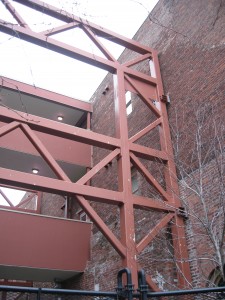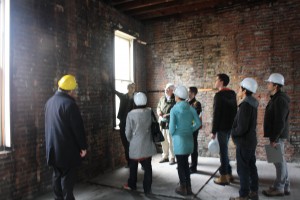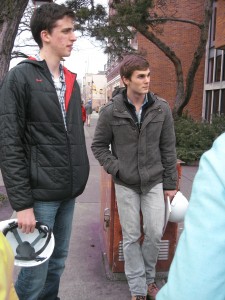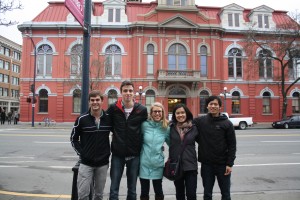Although all team travel has been completed and all the data has been gathered, there is still much work to be done. This post will summarize the activities of the trip, outline what work remains to be done, and provide the safety plan which was made in case of emergency.
The team met with two students from the geography department and surveyed approximately 50 buildings in and around Market Square. All buildings were surveyed from the outside, and for several buildings interior and rooftop inspections were performed as well. These building were 538 and 536 Yates Street, 1400 Government Street, 536-544 Pandora Street, and most of Market Square. Also, the team discussed how the data should be electronically organized to facilite the GIS mapping to be done by the geography students.
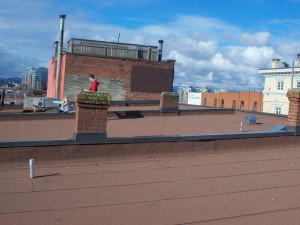
Market Square Rooftops
The next step of the project is for the team to input all the building data into one master spreadsheet, as requested by the geography team. Each team member will input the data for the buildings that they personally surveyed, as they will be most familiar with the information. The geography team will then use this spreadsheet to map the data into the City of Victoria’s GIS system. This is expected to be completed and submitted by March 13.
In the unlikely event of an emergency while in Victoria, the following safety plan was made:
Team member in charge of safety: Keith Hand
Team Headquarters: Victoria City Hall (1 Centennial Square, Victoria)
Nearest Hospital: Royal Jubilee Hospital (1952 Bay Street, Victoria)
The nearest hospital to the downtown core is the Royal Jubilee Hospital. In the event of a medical emergency, the injured team member will be transported either by ambulance or, if the situation permits, driven by another team member to the emergency room. After contacting the emergency authorities, the team members’ emergency contact will be contacted, as well as Brandon Paxton who is the mentor of the CBEL project and Dr. Susan Nesbit.
If a team member receives a non-life threatening injury which does not require them to be taken to the hospital, they will contact the designated team member in charge of safety and notify him of the injury. The team member will then travel back to Victoria City Hall with another team member. Victoria City Hall has been designated as our headquarters while working for the Victoria Civic Heritage Trust, and will also serve as a first aid station in the case of an injury.
In the event that there is a medical emergency while on the ferry, the team will immediately contact the medical staff aboard BC Ferries. In the case that it is required that the ship be abandoned, for whatever reason, the team will follow the lead of BC Ferries staff to the nearest exit point and follow their emergency procedures. If a situation arises where seismic activity occurs while the team is visiting Victoria, team members will regroup at Victoria City Hall when it is safe to do so. Team members are to find available cover as soon as possible and remain there 60 seconds after the last ground shake to be sure that the earthquake is over.
